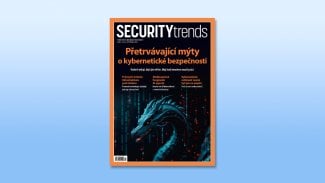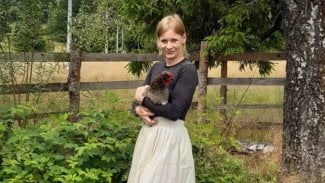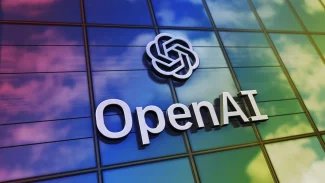update-rc.d
NAME
update-rc.d - install and remove System-V style init script links
SYNOPSIS
update-rc.d
[-n]
[-f]
B name remove
update-rc.d
[-n]
B name
R defaults | multiuser
[NN | SS KK]
update-rc.d
[-n]
name
R start | stop
R NN runlevel [ runlevel ]...
.
R start | stop
R NN runlevel [ runlevel ]...
R . ...
DESCRIPTION
update-rc.d
updates the System V style init script links
I /etc/rc runlevel .d/ NNname
whose target is the script
I /etc/init.d/ name .
These links are run by
init
when it changes runlevels; they are generally used to start and stop
system services such as daemons.
runlevel
is one of the runlevels supported by
R init , namely, 0123456789S , and
NN
is the two-digit sequence number that determines where in the sequence
init
will run the scripts.
This manpage documents only the usage and behaviour of
R update-rc.d .
For a discussion of the System V style init script arrangements please
see
init(8)
and the
R Debian Policy Manual .
Please note that this program was designed for use
in package maintainer scripts and, accordingly,
has only the very limited functionality required by such scripts.
System administrators are not encouraged to use
R update-rc.d
to manage runlevels.
They should edit the links directly or
use runlevel editors such as
sysv-rc-conf
and
bum
instead.
INSTALLING INIT SCRIPT LINKS
When run with either the
R defaults , multiuser , start , or stop
options,
update-rc.d
makes links
I /etc/rc runlevel .d/[SK] NNname
that point to the script
R /etc/init.d/ name.
If any files
I /etc/rc runlevel .d/[SK]?? name
already exist then
update-rc.d
does nothing.
The program was written this way so that it will never
change an existing configuration, which may have been
customized by the system administrator.
The program will only install links if none are present,
i.e.,
if it appears that the service has never been installed before.
A common system administration error is to delete the links
with the thought that this will "disable" the service, i.e.,
that this will prevent the service from being started.
However, if all links have been deleted then the next time
the package is upgraded, the package's
postinst
script will run
update-rc.d
again and this will reinstall links at their factory default locations.
The correct way to disable services is to configure the
service as stopped in all runlevels in which it is started by default.
In the System V init system this means renaming
the service's symbolic links
from
S
to
R K .
If
defaults
is used then
update-rc.d
will make links to start the service in runlevels
2345
and to stop the service in runlevels
R 016 .
If
multiuser
is used then
update-rc.d
will make links to start the service in runlevels
2345
and top stop the service in only runlevel
R 1 .
By default all the links will have sequence number 20, but
this can be overridden by supplying one
NN
or two
SS
and
KK
arguments to either
R defaults or multiuser ;
a single argument overrides the sequence number
for both start and stop links
whereas a pair of arguments overrides the sequence numbers
for start and stop links, respectively.
As a rule of thumb, the sequence number of the stop link
should 100 minus the sequence number of the start link;
this causes services to be stopped in the opposite order
to that in which they are started.
Obviously, therefore, the default stop sequence number
should be 80.
Defaulting to 20, as
update-rc.d
does, is an old bug that cannot be fixed because
of the risk of breaking things.
Instead of
R defaults or multiuser
one can give one or more sets of arguments specifying
particular runlevels in which to start or stop the service.
Each of these sets of arguments starts with the keyword
R start or stop
and a sequence number
R NN ,
followed by one or more runlevel numbers.
The set is terminated by a solitary full stop character.
When explicit specification, rather than
R defaults ,
is used there will usually be one
start
and one
stop
set. If different sequence codes are required in different runlevels
then several
start
sets or several
stop
sets may be specified.
If this is done and the same runlevel is named in multiple sets
then only the last one counts.
Therefore it is not possible to create multiple
start
or multiple
stop
links for a service in a single runlevel directory.
The script
I /etc/init.d/ name
must exist before
update-rc.d
is run to create the links.
REMOVING SCRIPTS
When invoked with the
remove
option, update-rc.d removes any links in the
I /etc/rc runlevel .d
directories to the script
I /etc/init.d/ name.
The script must have been deleted already.
If the script is still present then
update-rc.d
aborts with an error message.
update-rc.d
is usually called from a package's post-removal script when that
script is given the
purge
argument.
Any files in the
I /etc/rc runlevel .d
directories that are not symbolic links to the script
I /etc/init.d/ name
will be left untouched.
OPTIONS
-n
Don't do anything, just show what we would do.
-f
Force removal of symlinks even if
I /etc/init.d/ name
still exists.
EXAMPLES
Insert links using the defaults:
update-rc.d foobar defaultsEquivalent command using explicit argument sets:
update-rc.d foobar start 20 2 3 4 5 . stop 20 0 1 6 .Insert links for a service that should be running during multi-user mode, but that does not need to be explicitly stopped on shutdown:
update-rc.d foobar multiuserEquivalent command using explicit argument sets:
update-rc.d foobar start 20 2 3 4 5 . stop 20 1 .More typical command using explicit argument sets:
update-rc.d foobar start 30 2 3 4 5 . stop 70 0 1 6 .Remove all links for a script (assuming foobar has been deleted already):
update-rc.d foobar removeExample of disabling a service:
update-rc.d -f foobar remove update-rc.d foobar stop 20 2 3 4 5 .Example of a command for installing a system initialization-and-shutdown script:
update-rc.d foobar start 45 S . start 31 0 6 .Example of a command for disabling a system initialization-and-shutdown script:
update-rc.d -f foobar remove update-rc.d foobar stop 45 S .
NOTES
The
multiuser
option is an Ubuntu-extension intended to reduce the amount of time spent
stopping services during shutdown and reboot that have no particular
requirement to be explicitly stopped.
Unless your init script does something in the
stop
command that is more than just sending the
R TERM or KILL
signal to the running process, you should strongly consider using
multiuser
instead of
R defaults .
BUGS
See http://bugs.debian.org/sysv-rc.
FILES
/etc/init.d/
The directory containing the actual init scripts.
/etc/rc?.d/
The directories containing the links used by
R init
and managed by
R update-rc.d .
/etc/init.d/skeleton
Model for use by writers of
init.d
scripts.



















